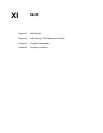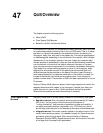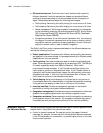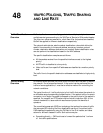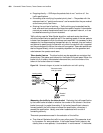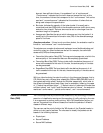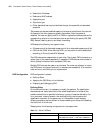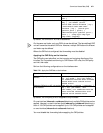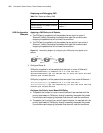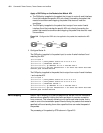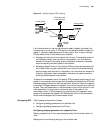
Committed Access Rate (CAR) 669
does not have sufficient tokens, it is considered “out of conformance”.
“Conformance” indicates that the traffic does not exceed the limit--at this
time, the number of tokens that correspond to the "conformance" limit can be
used and “nonconformance” indicates that the number of tokens that are
being used is beyond the specification.
■ Burst size: Indicates the capacity of the token bucket. It is usually set to
committed burst size (CBS) which is the allowable maximum traffic size in every
evaluation time interval. The burst size must be set to a size larger than the
maximum length of the packet.
■ Average rate: Specifies the rate at which tokens are put into the bucket. It is
usually set to the committed information rate (CIR) or the allowable average
speed of the flows.
Complex evaluation If there is only one token bucket, the evaluation result is
limited to “conformance” and “nonconformance”.
To evaluate more complex situations and implement more flexible adjusting and
controlling rules, two token buckets can be set. For example, the committed
access rate (CAR) has three parameters:
■ Committed Information Rate (CIR): The long period average rate, at which the
service quality of the transmitted data can be completely guaranteed.
■ Committed Burst Size (CBS): The burst data traffic size before the amount of
some traffic exceeds the line rate. At this rate, the service quality of the data
can be guaranteed.
■ Excess Burst Size (EBS): The burst data traffic size before the amount of all
traffic exceeds the line rate. At this rate, the service quality of the data cannot
be guaranteed.
With two token buckets, the rates for putting in the tokens are the same, that is,
CIR. While they are in different size--respectively CBS and EBS (CBS<EBS, both of
the buckets are briefly called C bucket and E bucket respectively), which refer to
the different allowable burst levels. Every time for evaluation, based on the cases
of “C bucket has sufficient token”, “C bucket is short of tokens and E bucket has
sufficient tokens” and “both C and E buckets are short of tokens”, the evaluation
results are “conformance”, “partial conformance”, and “nonconformance”.
Committed Access
Rate (CAR)
The functions provided by the committed access rate (CAR) technology include the
execution of classification service and the execution of traffic policing by line rate.
It is an approach to perform traffic policing. With CAR classification service, you
can sort the packets into different classes, and handle the packets of different
classes in different ways.
The user can use the priority fields in the ToS domain of the IP packet header to
define up to six types of services. The rules used to classify the packets can be
based on the following features:
■ Physical port
■ Source IP address
■ Source MAC address



